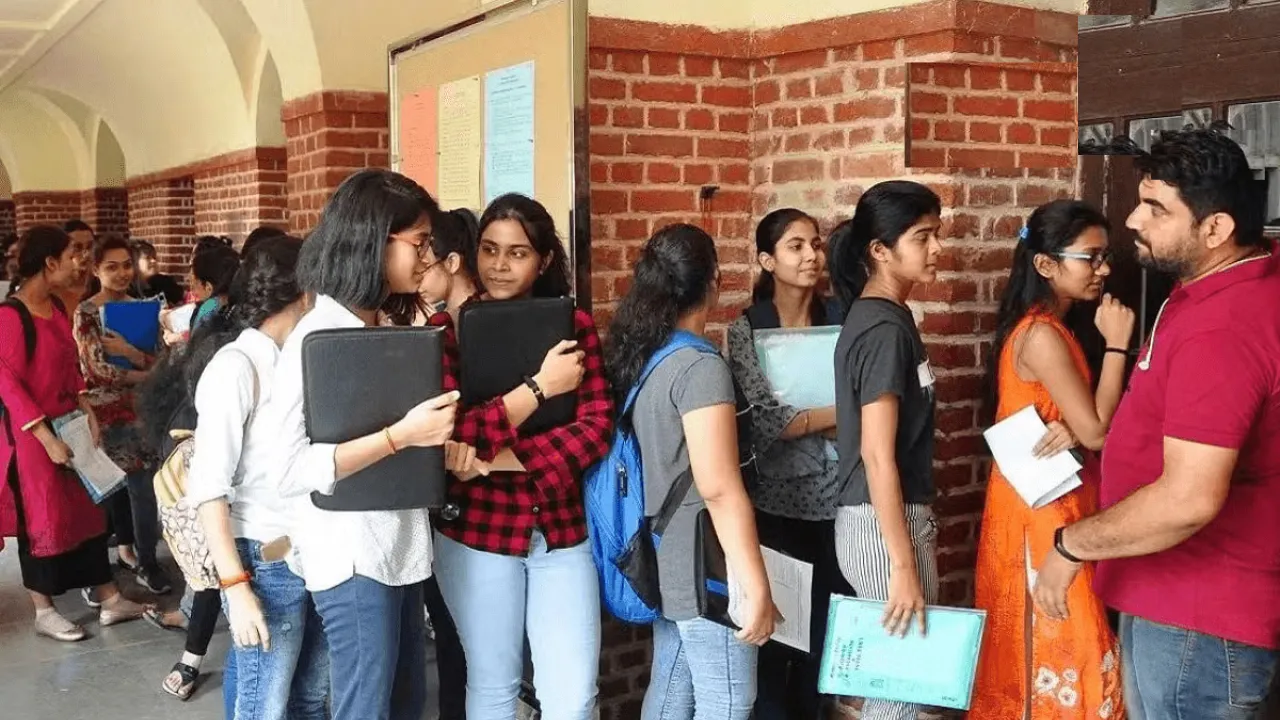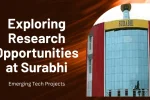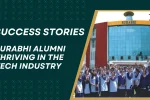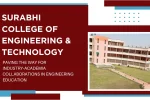The Evolving Campus: Surabhi College of Engineering & Technology (SCET), located in Bhopal, has steadily built a reputation for quality education since its inception in 2008. Spread across a spacious 47-acre campus, the college has successfully blended traditional academic strengths with modern teaching methods. However, to stay ahead in a world where technology and educational models evolve rapidly, SCET understands the importance of continually enhancing its campus infrastructure.
The Evolving Campus: Future Vision and Infrastructure Development Plans for Surabhi College outlines the institution’s commitment to creating a smart, future-ready learning environment. SCET’s roadmap includes upgrades in laboratory facilities, digital learning tools, campus expansion, and sustainable development features. These initiatives are aimed at enriching student life, fostering innovation, and building global competence among graduates.
The Evolving Campus: Future Vision and Infrastructure Development Plans for Surabhi College Overview Table
| Development Area | Planned Initiatives |
| Advanced Labs | AI/ML, Robotics, IoT, Sustainable Engineering Labs |
| Digital Infrastructure | Campus-wide Wi-Fi, Smart Classrooms, LMS, Cloud Resources |
| Campus Expansion | Research Block, New Hostels, Auditorium, Sports Complex |
| Sustainability | Solar Power, Rainwater Harvesting, Green Buildings |
| New Academic Programs | Robotics & AI, Data Science, Renewable Energy, Cybersecurity |
| Industry and Global Collaboration | Centers of Excellence, International MoUs, Alumni Engagement |
Advanced Laboratories and Specialized Centers
To match the pace of technological advancements, SCET plans to upgrade its existing labs and introduce new specialized centers. These include dedicated labs for artificial intelligence, robotics, IoT, and sustainable engineering. Students will gain hands-on experience with tools like robotic arms, smart sensors, and renewable energy systems. Innovation Labs will evolve into full-fledged research zones, promoting interdisciplinary learning and product development.
Additionally, SCET aims to collaborate with industries to create skill development centers. These labs will simulate real-world industrial settings, improving students’ practical exposure and employability.
Strengthening Digital Infrastructure
In today’s connected world, strong digital infrastructure is essential. SCET plans to extend high-speed internet access across the entire campus, including classrooms, hostels, and public areas. Smart classrooms will be enhanced with modern tech—interactive whiteboards, projectors, and audio-visual systems—to support hybrid learning.
The college also plans to upgrade its Learning Management System (LMS), making it easier for students to access study materials, submit assignments, and track academic progress. Cloud computing access and cybersecurity upgrades will further support a seamless and secure digital learning experience.
Campus Expansion and New Facilities
With student numbers growing and academic offerings expanding, SCET is planning new buildings and upgraded facilities. A dedicated research and innovation block will host labs, incubation centers, and collaborative spaces for faculty and student projects. Hostel infrastructure will be expanded to include new blocks with modern amenities, ensuring comfort and safety.
A modern auditorium is on the agenda, capable of hosting national-level seminars, cultural festivals, and placement events. Sports infrastructure will also see major upgrades, possibly including an indoor complex, swimming pool, and fitness center.
Emphasis on Sustainability
Sustainability is a key element of SCET’s future campus vision. New constructions will follow green building norms and incorporate energy-efficient systems. Initiatives like rainwater harvesting, solar power generation, and waste segregation are planned to create an eco-friendly campus. These efforts not only reduce the environmental footprint but also set an example for students to adopt sustainable practices.
Launching New-Age Programs
As part of its long-term vision, SCET is preparing to introduce programs in high-demand fields such as Robotics & AI, Cybersecurity, Renewable Energy Engineering, and Data Science. These new courses will be aligned with current industry needs and technological trends. The aim is to equip students with relevant, future-focused skills that enhance their career prospects globally.
Stronger Industry and Global Ties
The future campus of SCET will place greater emphasis on industry-academia collaboration. Plans include forming “Centers of Excellence” in partnership with reputed firms to conduct joint research, curriculum design, and faculty development. These ties will also boost internship and placement opportunities for students.
Global exposure is also a priority. SCET is exploring international collaborations that could lead to student exchange programs, dual degrees, and research partnerships with foreign universities. In addition, the college will work closely with its alumni network for mentoring, funding, and knowledge-sharing.
Key Infrastructure Highlights
- AI and Robotics Labs
- Future-ready labs with advanced software and hardware tools
- Hands-on training in emerging technologies
- Future-ready labs with advanced software and hardware tools
- Hostel and Auditorium Development
- Comfortable, secure hostel blocks with modern facilities
- A new auditorium for conferences, cultural events, and large gatherings
- Comfortable, secure hostel blocks with modern facilities
FAQs
1. What new labs are planned at SCET?
Labs focusing on AI, Robotics, IoT, and sustainability are part of the infrastructure upgrade.
2. How will digital learning be enhanced?
Through smart classrooms, campus-wide Wi-Fi, LMS improvements, and access to cloud computing platforms.
3. Are there plans for new academic programs?
Yes, SCET plans to launch specialized programs in Robotics, Data Science, Cybersecurity, and Renewable Energy.
4. What sustainability features will be added?
Solar panels, green buildings, rainwater harvesting, and efficient waste management will be key sustainability measures.
5. Will the college collaborate internationally?
Yes, SCET aims to form global partnerships for student exchanges, joint research, and dual-degree programs.
Final Thought
The Evolving Campus: Future Vision and Infrastructure Development Plans for Surabhi College reflects SCET’s drive to stay ahead in a fast-changing world. With cutting-edge labs, digital learning tools, sustainable initiatives, and international collaborations on the horizon, SCET is shaping an environment that prepares students for global success. If you’re excited about the future of education and innovation, don’t forget to share this article or explore what’s ahead in your academic horoscope!






